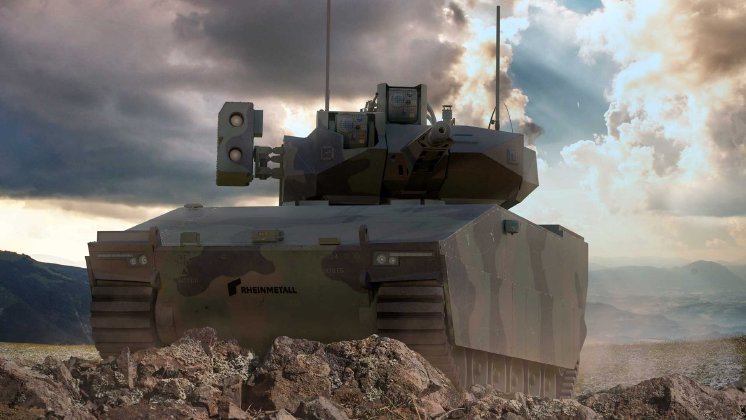- American Rheinmetall Vehicles and Team Lynx win contract for Phase 3 and 4 of the Army’s XM30 program
- The Lynx OMFV is a transformational Infantry Combat Vehicle with superior protection, next-gen lethality, unbeatable mobility, and an open systems architecture
- Phase 3 and 4 full contract value in excess of $700 million
The U.S. Army has awarded American Rheinmetall Vehicles (Sterling Heights, MI) and the industry leading companies of Team Lynx - Textron Systems, Raytheon Technologies, L3Harris Technologies, Allison Transmission, and Anduril Industries – a contract for the Optionally Manned Fighting Vehicle (OMFV) Phase 3 Detailed Design and Phase 4 Prototype Build and Test phases of the five-phased program, now named the XM30 Mechanized Infantry Combat Vehicle program. The Army awarded a total of two contracts for Phase 3 and 4 performance. The two competitors will now complete the designs that began in the Phase 2 Concept Design phase and build at least seven and as many as 11 prototypes for Army evaluation with a full contract value in excess of $700 million.
“American Rheinmetall Vehicles and our teammates are excited about the award and we look forward to continuing our important work with the Army in this critical modernization program,” said Matthew Warnick, Managing Director for American Rheinmetall Vehicles. “Team Lynx brings together some of the finest defense technology companies in the world and will deliver a truly transformational, modern Infantry Combat Vehicle that ensures our Soldiers can fight, survive, and win on future battlefields.“
American Rheinmetall Vehicles and Team Lynx are developing a next-generation XM30 that achieves the Army’s requirements for a combat vehicle with superior protection, unsurpassed firepower, and unbeatable mobility. Operating with other units or independently, the vehicle can sense, move, and strike in a connected, rapidly changing, complex, and lethal operational environment unlike any Infantry Combat Vehicle before.
With its modular design and open architecture, the Army can tailor the Lynx OMFV to meet specific missions or threats, rapidly evolving to adapt to future requirements. These features also significantly reduce the training and logistics burden, leading to greater operational readiness. The Lynx OMFV’s Ground Combat Systems Common Infrastructure Architecture (GCIA) hosts an electrical, software, and structural architecture that results in a uniquely modular concept that reduces production and lifecycle costs. This open systems approach to the vehicle architecture, coupled with weight growth margin and electrical power reserve, delivers a transformational platform today that is prepared for rapid adoption and insertion of the emerging new technologies of the future – ensuring overmatch today and overmatch tomorrow.
“American Rheinmetall Vehicles has brought together remarkable companies, ideas, technologies, and approaches to deliver a truly next-generation, lethal, survivable, and enduring infantry fighting vehicle concept,” said retired U.S. Army Lieutenant General Bill Mayville, a member of the ARV Board of Directors. “This team is delivering on the Army’s highest and most ambitious priorities and I am confident it will continue to bring exceptional solutions as part of this important modernization effort.”
Design work for the upcoming phases will primarily take place at American Rheinmetall Vehicles’ facility in Sterling Heights, MI, with support from partners across the country. Final prototype assembly is slated to be done at the Textron Systems production facility in Slidell, LA. Upon completion of Phases 3 and 4, the Army plans to down select to one vendor for Low-Rate Initial Production in Phase 5 of the program near the end of 2027.


